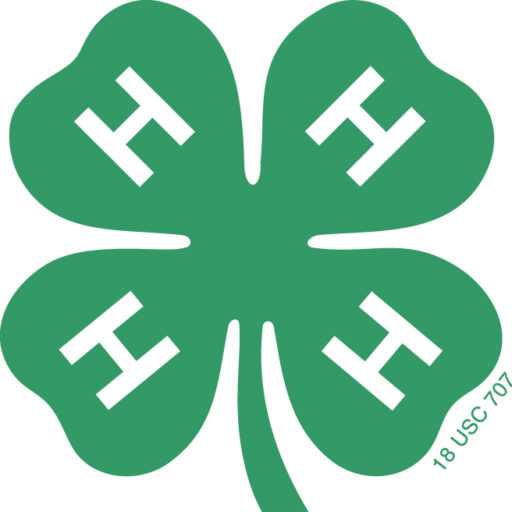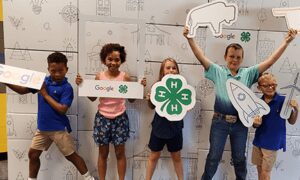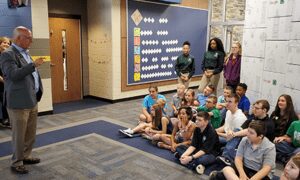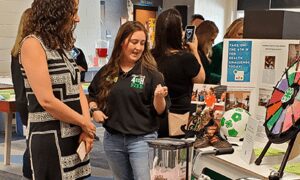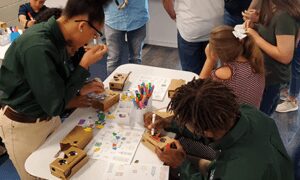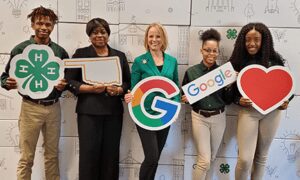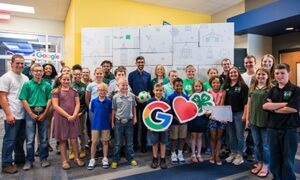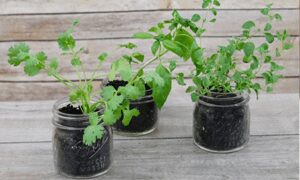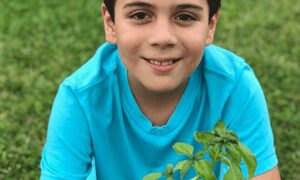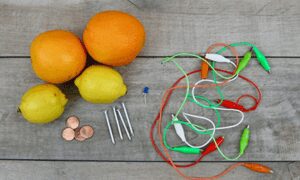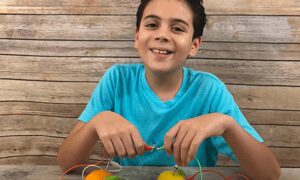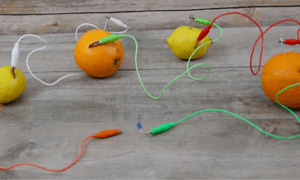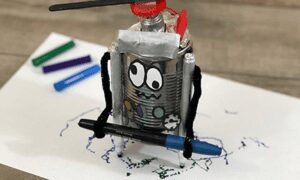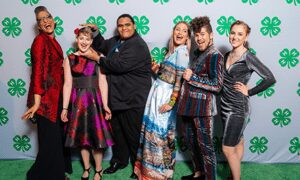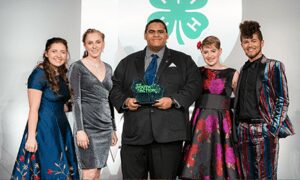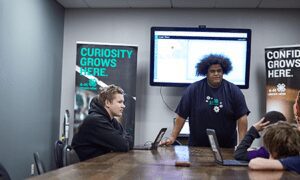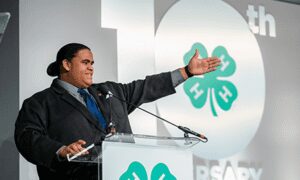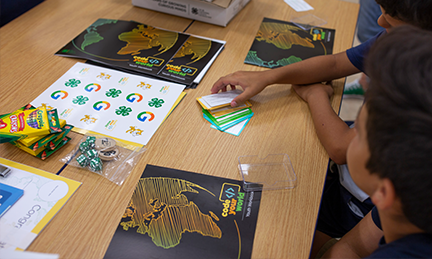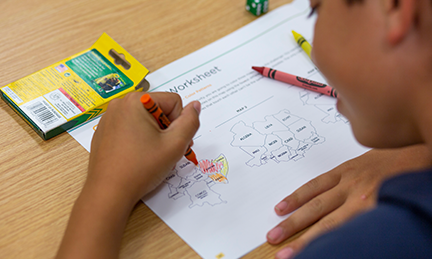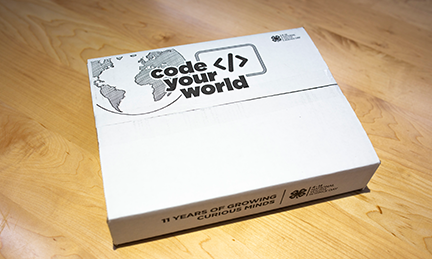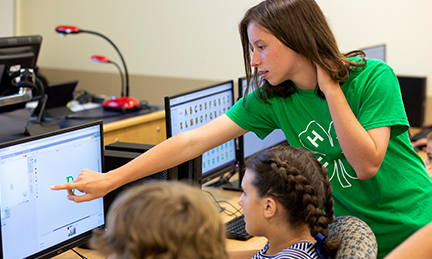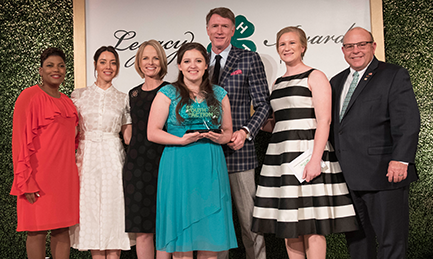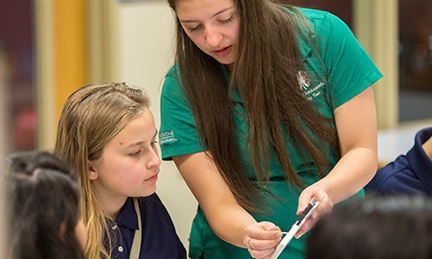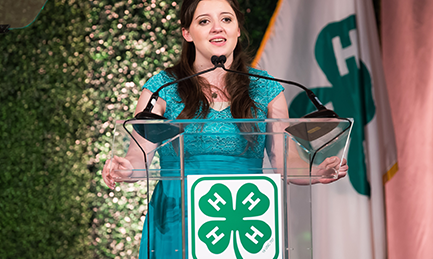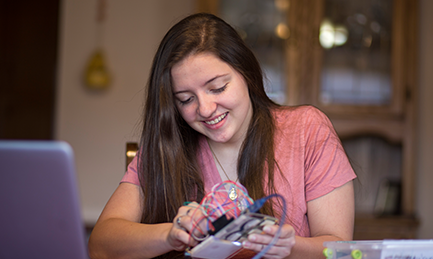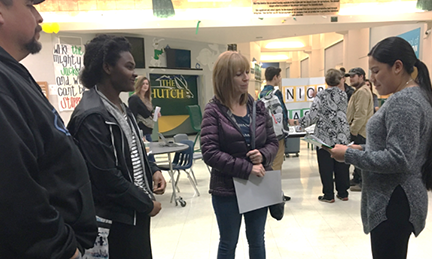I caught up with Mike to find out how the Ohio 4‑H alumnus grew into the Chief Engineer of a space-based manufacturing company, and what it took to get there.
What are you focused on at Made In Space?
Mike Snyder (MS): We are a space-based manufacturing company that specializes in leveraging the unique properties of the space environment to develop solutions to commercial, industrial, research and defense challenges. In 2014, we were the first company to manufacture in space with our 3D printer on board the International Space Station (ISS). We flew a second generation of the device to ISS in 2016 where it’s printing every week for customers. We’ve expanded upon our 3D printing technology to develop capabilities and products for a variety of commercial and defense applications. Made In Space was founded in 2010 by myself and three other co-founders, with the idea of helping humans live and work in space. Our most recent experiment, fiber optics, utilizes the effects of microgravity to create a better product in space than here on Earth. Our goal with fiber is to produce the material in large enough quantities for sale and use back on Earth. We’re also involved with many other cool projects such as Archinaut, an in-space additive manufacturing and assembly robotic technology, as well as in-space recycling and technologies that harness in-situ resources to build habitats and other structures on planets such as the Moon and Mars.
Where did your 4‑H experience begin?

MS: So I got in at the Cloverbud age as soon as possible, but I was also around before that because [my sister] was already heavily involved. I would go to meetings just as a fly on the wall. I don’t know how old I was, but I was pretty young. I went through the Cloverbuds and then went straight from that to where I can do the work and projects of the older kids. I got into that as soon as I could. I was actually kind of an oddball. I was into insects and rockets, primarily. Those were the two things that I always went to the state fair for, and I always won county. I don’t know if I’ve ever lost an insect showing ever since I started.
The club experience was great. I really believe it helped me. It accelerated my ability to speak in front of people. It also helped me in terms of contextualizing, telling a story, and getting my points across, without having to be asked specific details, which was the format of judging. You’re in front of the experts in whatever field your area of project is. This is where you needed to know your stuff. It’s intimidating as a child, to start off like that when you’re ten years old, in front of people who have these life experiences and know a lot more than you, trying to convince them you’re legit and you learned things from your project.
It was interesting because every year I would build on the previous year. I wouldn’t just sit idle. My next year’s rockets were better than the previous year’s, my insect collection grew, and my knowledge base grew. It really put me in a lifelong learning mentality in terms organizing and presenting my work. I was able to see something from start to finish and understanding how a project schedule works. Not waiting until the last minute the night before your project is due to do your work, although I’d done that a couple of times (laugh). It helped me mature as a professional a little earlier than a lot of folks that didn’t have that experience. It was very beneficial to me.

You mentioned organizing and presenting as key skills/values learned, but were there other top skills and values you learned during your time in 4‑H?
MS: There were definitely other skills. The project-based ones are very technical and kind of sparked my curiosity. The livestock ones were more taking care of animals, from washing to feeding to cleaning up their waste. That was like a job within a job that, in the end, you sold off your animal and got a check for your hard work. I raised pigs, chickens and rabbits, and each animal teaches you a different thing and gives you a different perspective on life in general. Definitely how the farm world works and how our ecosystem functions, specifically regarding how what we do today, affects our tomorrow. Those are some of the lessons where you see the fruits of your labor. You might go through some trials and tribulations to achieve it, but you can’t give up because you’re responsible for these animals. You just have to keep pushing through no matter what happens. I had injury once that lasted a few weeks, and I couldn’t participate in a time-efficient manner. I couldn’t get my hand wet. So I’d have to take twice as long to clean things and do things because I could only work with one hand, so it gives you a new respect for how to get the job done and be clever at how to do certain things. That’s another thing that kind of resonates with me today.
After your experience in raising livestock and participating in other traditional 4‑H projects, was there a key moment in your education or experiences as a young person that led you to pursue a career in engineering?
MS: You know, I’m kind of an oddball in that respect. It’s hard to trace back when I wanted to do engineering, but from all accounts, it was almost simultaneously when I escaped the womb. I’ve never not wanted to do what I’m doing today. I’ve had times where I wanted to be multiple things, but there was always a time when I wanted to be an aerospace engineer and work on stuff for space. I don’t know when that moment was, but it’s been a lifelong dream of mine. So I did everything I thought could benefit, and that included 4‑H and the projects I picked.

Many of the alumni I’ve talked to had a very traditional experience in 4‑H. Like yourself, they participated in mainly ag-related projects. You seem to have ventured beyond that with your interest in rocketry. Share your thoughts on the evolution of 4‑H and how you think the organization is preparing today’s young people to be leaders in STEM.
MS: I feel like towards the end of my stint, I started to witness a transition happening. And I think it had a lot to with more people having computers inside their homes. The projects kind of changed and the way the materials were presented was different and more engaging. The project books included more hands-on experiments and fewer words attached to those experiments. Instead of reading 20 pages until you get to an experiment, there was one every five pages. I think the evolution signified the healthy transition of how we present knowledge and how we learn, and there are subject areas that are useful. Things that I may have learned growing up may be irrelevant today because certain aspects of technology are overtaken with the decreased need to do or learn those things.
I sometimes do nerd out a little bit and look at what they’re doing, like with the rocket project, for example. I like how the new format for a lot of the projects are pretty interesting and how they are presented. I really think inspiring and giving young people the ability to learn things in an easy, straight-forward fashion and then allowing them to take it to whatever level they want is really helpful. For example, a lot of STEM activities are start-to-finish. I think 4‑H is more about a collection of work where you have reference material that is start-to-finish, but what you do with that material can take on many forms. That fosters the creativity in young people and gives them a chance to build something that doesn’t necessarily look like the first specs of their presentation or collection of work, but they can own it. And when you talk about STEM, that’s a great way to learn those types of activities. Not just putting together a robot from a bunch of kit parts, but taking a bunch of parts and putting together a robot that serves a function that you may think is useful. I think a lot of the project-level learning I had allowed me to do that. I can take it and do what I wanted after I learned the base material, which was very beneficial.
As you look back on your career growth, what were the challenges you faced?
MS: School was very easy for me until I got to college, where I woke up pretty fast. I think the way I learned projects in the summer with 4‑H assisted me in that because I usually would do subject areas that had nothing to do with which I was familiar. I would often pick up one or two projects that I had no clue what was going on, just to learn them. That ranged from electrical projects to computer programming projects. I realize that it was a different world in college, not necessarily the subject matter, but how you’re tested and the expectations. I was relatively bored in high school and just kind of showed up to take tests and was reading what I wanted to read in class. But the organizational skills and how to go about learning that I gained in 4‑H were really beneficial to have that in my back pocket to immediately be able to adapt.
What are your thoughts on ways we can encourage young people to pursue leadership opportunities in STEM?
MS: The STEM career part is very interesting because I find it difficult to engage folks with all the options available. Becoming involved in a STEM field at the beginning of your life is very exciting. And then you get into higher education, and it’s still exciting. There’s a middle ground where people lose interest, and I haven’t figured out why that is. But I was just thinking back to when I was in junior high, and half of my class wanted to do something that was in the technical/STEM field. When I looked at the numbers, I roughly recall the number of students that wanted to do engineering was in the double digits. However, there were only four people from my graduating class, I think, that ended up with an engineering degree. So what happened in the middle?
I think people get distracted, and I think you have to keep people continually engaged with different things that are meaningful to them. Something that’s just cool only has a limited life. You have to think, not just cool, but useful. And if you can attach that to a message that is useful for both the individual and the collective, there’s a double whammy. But I think people aren’t connecting at the individual level enough, and that’s why you see drops in the interest in STEM fields. I’m sure there’s also peer pressure and peer activities that are involved with that drop as well. But frankly, people just lose interest and then don’t have the opportunity to regain it. So I think just keeping them interested, giving them options, letting them know options exist, and things to do in that field exists, I believe to be very useful.
Do you think that thought applies when it comes to achieving more diversity in STEM leadership?
MS: Absolutely. I think whatever lens you’re looking through, some people either don’t feel like they belong or are welcomed. Part of this could be because of disinterest. So if you keep them interested and feeling involved and welcome, I think youth from all walks of life will stay engaged. Something happens that causes folks to feel like they can’t or shouldn’t do something, and we need to fix that. I think by making everything available and making everyone feel welcome is the best path there. Working towards a goal together is what we should be focusing on, not who is working on that goal.
What is your vision for the next generation of STEM leaders?
MS: Well the next generation has some interesting topics at hand, especially with how computational intelligence is increasing and things like machine learning are really taking root. There are going to be some ethical questions on what we can do in the future, as well as questions on what to work on next because there’s always going to be something to work on next. I feel like we may go full circle from living off the land and going completely technological in society and then going back to figure out how to regain the land. I feel like there’s opportunity in the future to pave the way for what STEM looks like 200 years from now.






